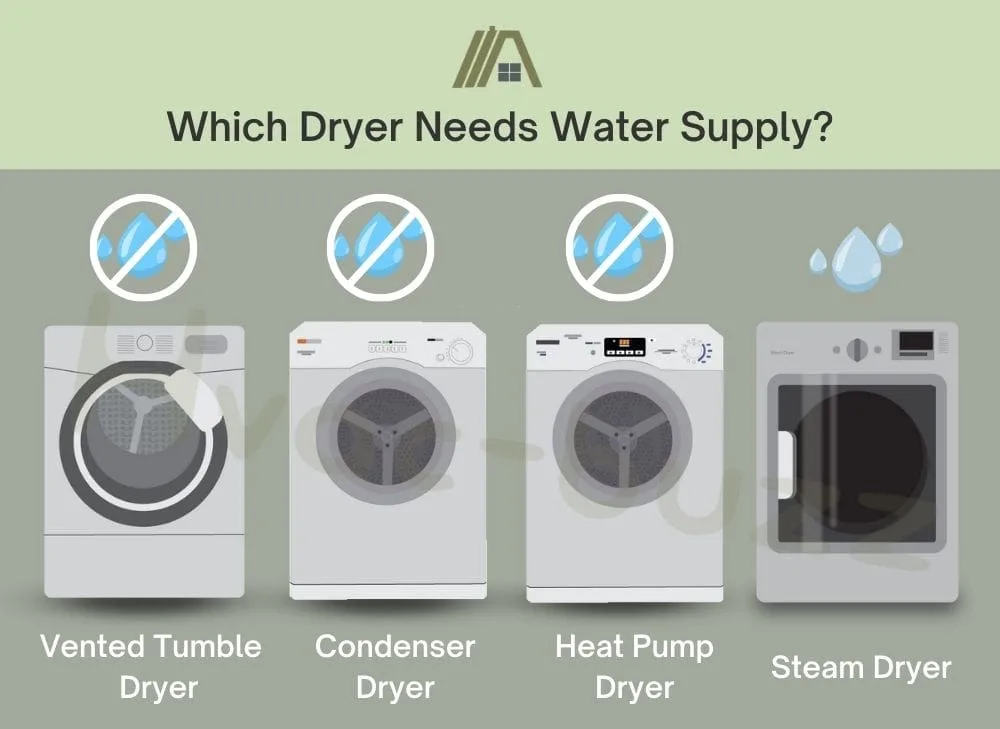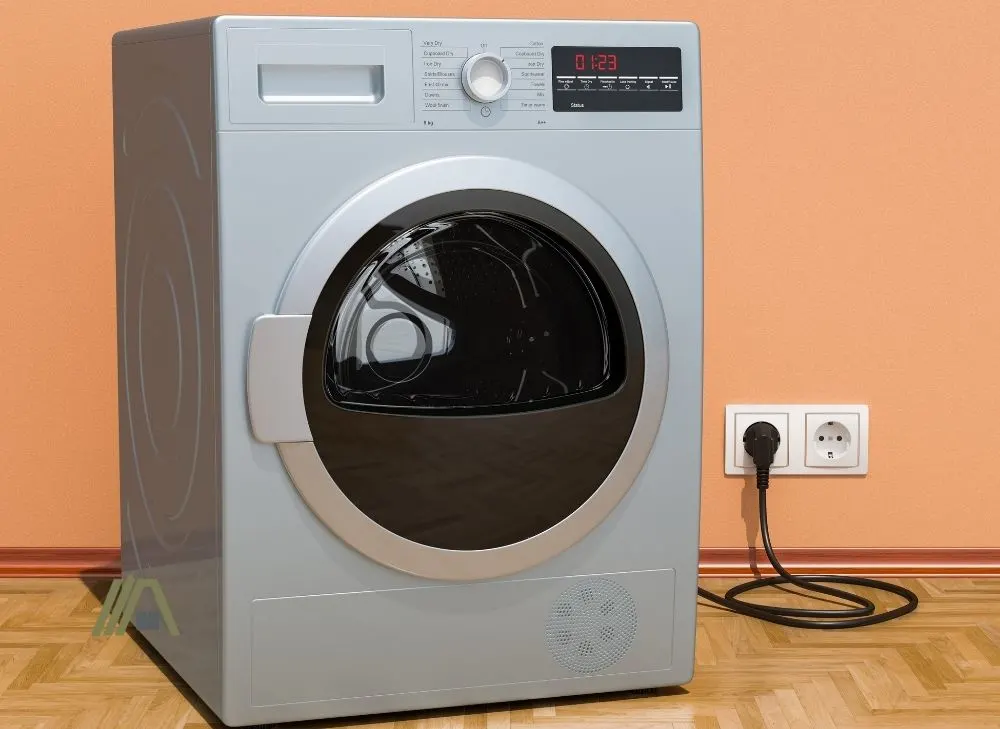Tumble dryers are quite a luxury to have, especially if you live in a condominium or apartment with little to no outdoor space and no laundry facility. Normally tumble dryers are known for removing water from fabrics, but some may actually require a water supply.
If you are new to tumble dryers and looking to buy one, here is some information on how each dryer works and when you would need a water supply.

Most types of tumble dryers do not require a water supply to function. The exception is steam dryers, which spray misted water into the drum during the drying cycle. This misted water is heated to create steam, which helps to remove wrinkles and odors from clothing.

Vented Tumble Dryers Do Not Need Water Supply
Vented tumble dryers were the pioneers for tumble dryers and are the oldest and quite possibly one of the most common dryer models found in people’s homes.
Vented dryers draw in the air from the room in which it is placed and then heats that air using the in-built heating elements. The heated air is circulated in the inner drum that spins the clothes.
Water in the clothing begins to evaporate as the hot air flows through the damp clothing. The steam from this process is then expelled to the outside of your home through a vent hose that can connect to the side or back (depending on the manufacturer) of the dryer.
This cycle is repeated over and over again throughout the drying process.
Vented dryers consume less energy but they do make it more complicated to place in your home as you would need to make sure it’s near an external wall or the roof so the ducts can be vented to the outside.
As you can see, vented dryers don’t need water to function, but water is one of its by-products.

Condenser Dryers Produce Water Rather Than Need It
While there are some similarities in the drying processes of the two different types of appliances, condenser dryers are ventless and can be considered the opposite of vented dryers. However, this does not mean that they require water to function.
In fact, condenser dryers collect water through the drying process. So, how do they work?
Condenser dryers draw air inside the drum. The air is warmed by heating elements and circulated the air in the drum that is situated between the heating elements and a cooling condensing coil. The warm air causes water from the clothing to evaporate and this air then passes over the condensing coil.
Now, let us revisit our 9th-grade physics class, shall we? Condensation occurs when vapor (steam) is cooled and turns back into a liquid form. This is the same phenomenon that occurs in a condenser dryer (hence the name) when the hot, moist air is cooled by the condensing coil.
The condensed water does not fall back into the dryer, this would be counter-productive. Instead, these dryers channel the condensed water to be collected in a removable container situated on the top or bottom of the dryer.
I strongly advise against consuming this water, however, there are different uses for it.
Some manufacturers do provide a small drain-hose that you can attach to the dryer and which can drain the water outside your home, or you can connect it to your home’s existing plumbing system.
One of the many advantages of condenser dryers is that you can place them anywhere in your home, preferably somewhere that is still well-ventilated as they still expel some warm air and water. Not necessarily enough to cause issues, but it’s still best to take every precaution in the fight to prevent mold.
No Water Required for Heat Pump Dryers
Heat pump dryers are an environmentalist’s best friend, it is by far one of the most energy-efficient appliances you could own. Let’s see why.
Heat pump dryers, which are also ventless, work with a closed-loop system and do not need a water supply nor do they have a heating element, instead the air is heated and cooled by coils containing liquid coolant.
The air is drawn from the surrounding area and passed over condenser coils filled with liquid coolant, which has been heated through compression. This heat is transferred to the air passing over the coils, which then enters the drum.
The hot air in the drum draws the moisture from the fabric and the resultant humid air is cooled in an evaporator located at the bottom of the dryer. Inside this evaporator, the coils are filled with cool liquid coolant which has lost its heat through transfer to the air, and because the coils here are larger and the compression is reduced.
You can watch this video for a visual explanation of the process:
The condensed water is collected and can be removed manually.
The energy-saving aspect of heat pump dryers comes in because the same air is then recycled and reheated in the condenser while it is still warm. Thus, less energy is used to reheat the new cold air.
Steam Dryers Do Need a Water Source
Steam dryers do need water to perform their primary and distinguishing function, although they can still function as a regular dryer without a water supply.
This does sound redundant, doesn’t it—adding water to fabrics you are trying to dry at the end of the day. But there is some common sense science behind this invention and it results in some great benefits.
Water is brought into the dryer from a constant water supply, which feeds into a small nozzle that is located within the drum of the dryer. The nozzle releases cold water in a mist form and this mist is heated by the hot air in the drum creating steam.
When the steam reaches extremely high temperatures it penetrates and softens the clothing to allow for fewer wrinkles and it can also sanitize your fabrics, removing odors.
Steam dryers aren’t really only aimed at drying your fabrics but have the added benefits of being able to freshen and sanitize them. You can even use this function on your dry clothing that just smells stale and has been sitting in your cupboard along with mothballs for too long.
Sources
https://aeg-appliances.ca/condensation-dryers-explained/
https://www.canstarblue.com.au/appliances/heat-pump-vs-condenser-dryer/
https://www.youtube-nocookie.com/embed/zw183KZQNwc?width=640&height=480&iframe=true
https://www.canstarblue.com.au/appliances/heat-pump-vs-condenser-dryer/
https://www.canstarblue.com.au/appliances/condenser-dryers/
https://thetibble.com/condenser-dryer-water-safe-consumption/
